Turtles Can Fly by Bahman Ghobadi
Niki Mirzaei
Background information to know prior to watching film
Iraq’s long war with Iran in the 1980s caused much damage to the lives of many Iraqis. Villagers
were resettled in places called mujama’at, or collective towns in order to prevent them from
supporting Kurdish guerrillas fighting the central government at the time. Helpless efforts were
enforced in some areas but later neglected and not looked upon. (Dagher) More displacement
and damage was caused to the Iraqi people by the US in the invasion of 2003. The forced
displacement is the largest in the Middle East since the 1948 Palestinian displacement at the
inception of the State of Israel. This massive forced displacement accounted for 100,000 persons.
This displacement brought upon psychological damage to both the individuals displaced and the
ones who must care for them. There are affects upon internal, regional and international
securities and economies when a massive displacement like this occurs. Along with displacement
comes the loss of identity, religion, and authority. There are also many children who are
orphaned and have to work and help each other grow in order (Banta)
About the film writer/director
Ghobadi is the only Iranian filmmaker who specifically films his short, long and documentary
films about the Kurdistan region and its people. Ghobadi’s films generally stay away from the
normal view of a family. Instead he focuses on society and how it has lost its balance and
composure and is dealing with social calamities caused by war, violence and poverty. His films
have the key elements that separate them from the norm. These elements are ethnographical,
documentary outlook, children, non-actors, and tragicomedy (Panahi).
Summary of the Film
Turtles Can Fly is a 2004 film written and directed by the Kurdish Iranian filmmaker
Bahman Ghobadi. It was the first film made in Iraq after the fall of Saddam Hussein. The
film takes place on a Kurdish refugee camp on the Iraq-Turkish border on the eve of the
US invasion of Iraq. The film introduces a thirteen-year old boy named Satellite who is
known for his installation of dishes and antennas for local villages. The villagers seek
information about the war and require Satellite to translate because he knows well
English. He is the manipulated leader of the children. He organized a dangerous but
necessary sweeping and clearing of minefields. These mines were later traded in
weapons of mass destruction. The film also has a mystic romance between Satellite
and a new orphan in the village named Agrin. She traveled with her disabled, armless
brother Hengov, who had the ability to predit the future. Se also had a blind childer
named Riga. He was the son of Agrin and an unknown solider who raped her during an
invasion in her homeland
.
Key Elements of Ghobadi’s Films
Ghobadi allows the audience to see the horrors of war through the innocent gaze of the victims in
the Iraqi Kurdistan area. He focuses on society and how it has lost its balance and composure and
is dealing with social calamities caused by war, violence and poverty. His films have the key
elements that separate them from the norm. These elements are ethnographical, documentary
outlook, children, non-actors, and tragicomedy. The children he uses in his films are usually
those who have lost their parents at a very early age and are forced to struggle for the survival
under harsh and inhumane conditions. This makes the films emotionally attachable to the
audience and helps the films gain unique qualities that set them apart from mainstream films.
Despite the bitter and tragic atmospheres and themes in Ghobadi’s films, he still includes bits of
subtle comedy to them. A prominent example is in Turtles Can Fly, in which the satellite TV
programs are presented and the religious reactions of the Kurdish villagers to their content
(Jahed).
Children Traditionally Portrayed in Iranian Film
Iranian films made in the birth of the 1979 Islamic Revolution often feature children. These films
embrace their innocent and naive nature. Iranian movies have child protagonists for several
different reasons but the main reason is to avoid the minefield of Islamic restrictions on the
pictoralization of adult male-female relationships. The use of children actors forms a loop hole to
express the ideas of the filmmakers in a way to please the censorship voids (Cardullo).
The innocence and naive elements that children offer in their roles in cinema are unique
to them. I believe they possess characteristics that adults do not bear due to their lack of
experience and awareness of what is going on in many complex situations and environments
(Cardullo).
Children in Turtles Can Fly
Although this generalization is true in most Iranian films the behavior of the children in
Turtles Can Fly is unique because it places the audience among very unique children and in a
very unique landscape; the landscape of war. These children live in the most dangerous
conditions and environments imaginable. They live in a refugee camp which has a scarce amount
of resources to offer. The camp cannot present the children with parents and any form of paternal
figures. The children are orphaned. Many of the children make a meager living by recovering
and selling land-mines from the surrounding fields. Many of the children make a living by
recovering and selling land-mines from the surrounding fields back to the city. These variables
add up to create a high degree of suspense and tension throughout the film. This sets the film
apart from other Iranian films (Seifkiar).
Loss of Innocence in Turtles Can Fly
I believe the children have loss their innocence in the refugee camp becausethey are not acting a regular, normal children. They are forced to adjust to their adult
responsibilities and actions in the camp because the adults are far too elderly to preform
the chores that the children must do. Instead of playing and enjoying their youth they
find themselves clearing land-mines and trying to bargain in the town to earn extra
money. Although the film does have scenes in which the children are playing and having
fun, the fun counteracts itself because of the environment they are in. A moving scene is
when the children are in an ammunition junkyard where empty bomb shells and missile
casings are stored and stacked up on top of each other. This is where the children play and work.
The children are stuck in a realm in between being children and being adults (Seifkiar).
Children on the Warfront
“What makes Turtles Can Fly a very unique film is that it shows the war
from the perspective of children. This is a very different point of view
than the one we usually find in war movies. What the film makes clear is
that in any war or military conflict, children suffer the most and that
when world leaders go to war, it is the children who will bear the brunt
of the misery and grief” (Seifkiar).
School Environment
Generally a school is considered the safest place for children. It is a place in which children aretaught to stray away from violence and they learn good morals and values. Although the teacher
was trying to get the children to stop horseplaying and learn a lesson, it was distracting for the
children because they were in the presence of weapons of mass destruction. The children were
more attracted to playing with the guns rather than learning the fibers of general education.
Brutalities of War
A moving scene of the film are in an ammunition junkyard where empty bomb shells and missile
casings are stored and stacked up on top of each other. The toddler Rega looking through stacks
of bomb shells, crying out “Mommy” and “Daddy” and is searching for them. Then Ghobadi
gives us a close up of Agrin who is gazing at some far away point and seems completely
oblivious to what Rega is doing (or more, she does not care about what Rega is doing). She is
utterly detached from her surroundings. This scene, perhaps better than any other, illustrates very
beautifully and painfully the film’s theme of the brutalities of war. It shows how one can despise
their own child enough to a point where Agrin placed Rega tied to a tree in an explosive field
because she was not mentally nor physically able to take care of the child (Seifkiar).
Powerlessness of those involved in War
Rega needs medical attention so he and Hangov are riding on the back of Satellite’s bicycle to a
place where they can find some help. As they are riding Hangov begins to have a vision n that
the U.S. invasion is about to begin. Ghobadi portrays this by going back and forth from
Hangov’s disturbed face to U.S. bombers loading up for attack and taking off from aircraft
carriers.This scene illustrates the powerlessness and the powerlessness of others who oppose
wars, to affect in any substantial way the decision of those who set wars in motion. Especially
since the characters in this film were children it made their powerlessness more intense
(Seifkiar).
Visible Disabilities of Children

powerless, in wars they become highly susceptible to physical or
emotional injuries. The children have visible injuries and disabilities.
Hangov is missing an arm and many of the other children have broken
legs or are missing legs. Many of the children in this film are intensely
unhappy, because they are forced to live with the constant violence of
war and can not escape it. The children also have mental disabilities.
Agrin is suffering from the tragic events internally instead of showing
signs externally like the other children (Seifikar).
Loss of Hope for the Future
The children are at a loss of hope for the future. They have have nothing
to look forward to in order for them to make changes and try to make
their troubles adjust for a better future. When young children are taking
care of each other, it makes it hard to hope for a better generation. Rega
symbolized the new generation on the refugee camp. The new
generation was thrown away. This was symbolized by the planned
drowning of Rega by his own mother. Even though they tried to save
him, it was too late, therefore it was too late to save the new generation
in general.
Embedded Comedy
There is a lot of humor embedded in the film. The humor is often very
effective and works to soften the blows of the harsh realities which this
film is dealing with. It also makes the film more watch-able and
enjoyable. It makes the film more light hearted and has a less of an
intense depressing effect. He was also very fond of President Busch
prior to the invasion of the American Soldiers (Seifikar).
The Kurdish Respect
The Kurds are the world’s largest ethnic group without their own state.
Their numbers exceed 25 million and most live in Kurdistan.
Historically, Kurds have been treated badly by the regional powers. They
had to endure living under foreign rulers for centuries. Recently, the
Kurds have received especially harsh treatment at the hands of the
Turkish and Iraqi governments and armies. However, some Kurds want
to establish an independent state (Seifikar).
Change in American View
In the beginning of the film Satellite is very fond of the Americans. He
seems very enthusiastic about their arrival and tends to add many
English phrases into his conversations such as “Hello Sir!”. However,
when the American soldiers actually arrive and he realizes what impact
they have on his life and the ones he loves, he looses interest for the
Americans and you can feel his disappointment.
Are Americans Making this film seem different than it actually is?
American Trailer for the film (pay attention to the music and the
lightheartedness)
Compare to actual music from film... how is it different from that of the american
trailer
Extra Videos to Ponder
The music sets the mood for the film, and this video shows the scenes and
pictures in which the children are both happy and sad
Scene from film, satellite tells the elders false news of america vs iraq war
Works Cited
1. Seifikar, Sasan The Heirs of Wars http://www.iranian.com/Seifikar/2005/February/Film2/
index.html
2. Panahi, Jafar Iranian New Wave: Part One
http://www.greencine.com/static/primers/iran-2.jsp
3. Jahed, Parviz. Directory of World Cinema, Volume 10: Iran. (Chicago: Intellect), pp. 254-7).
4. Dagher, Sam. “Uprooted for Decades, Iraqi Kurds Long for Home,” The New York Times,
September 4, 2009. http://www.nytimes.com/2009/09/04/world/middleeast/04kurdistan.html?
scp=1&sq=uprooted+for+decades&st=nyt
5. Banta, Benjamin R. “Just War Theory and the 2003 Iraq War Forced Displacement,” Journal of
Refugee Studies 21:3, pp. 261-84.




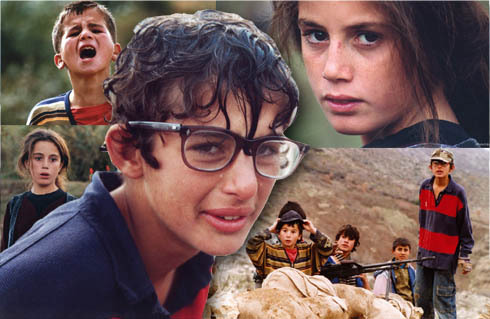


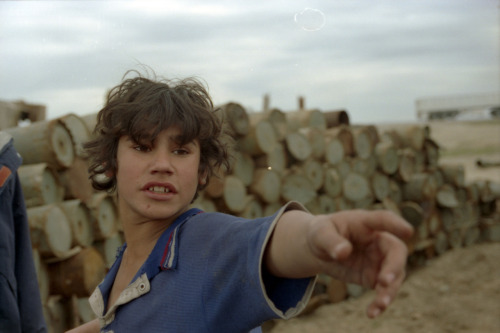

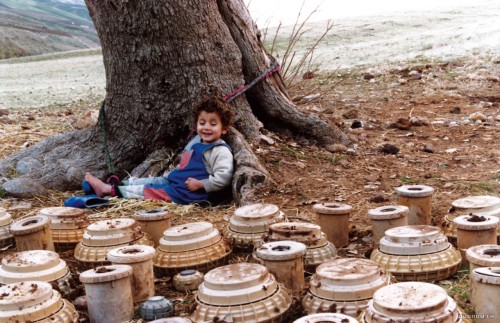
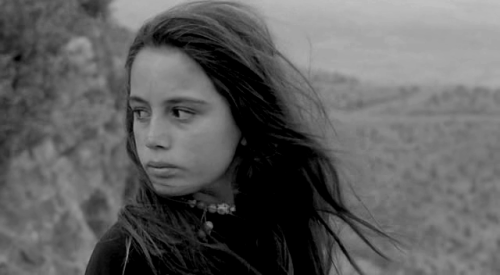


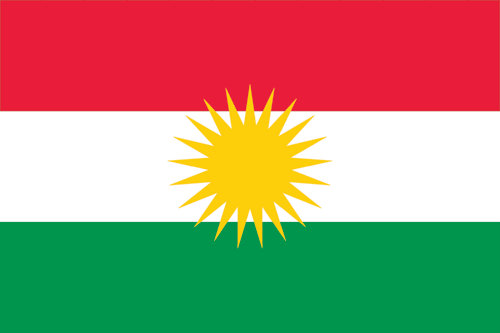


No comments:
Post a Comment